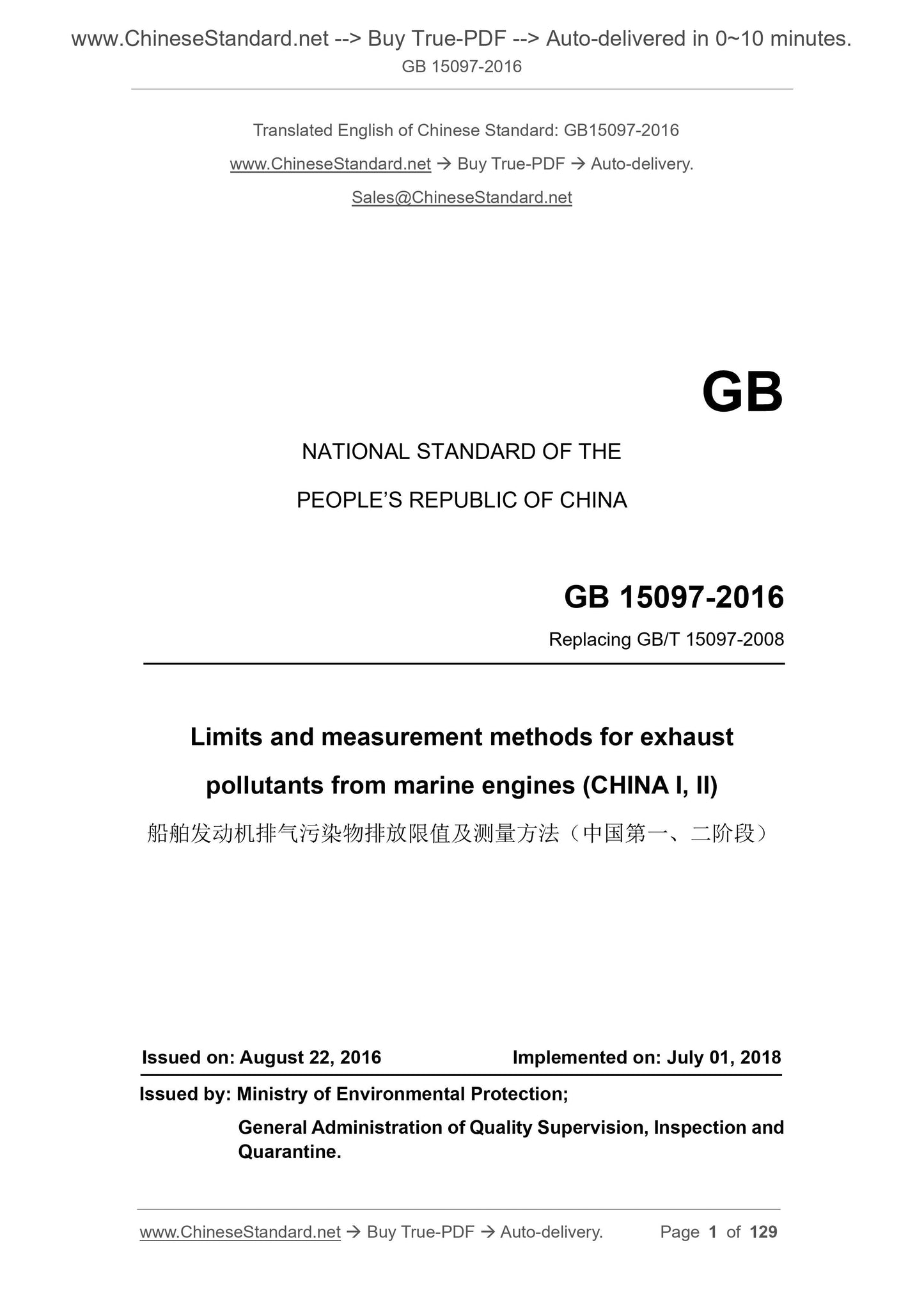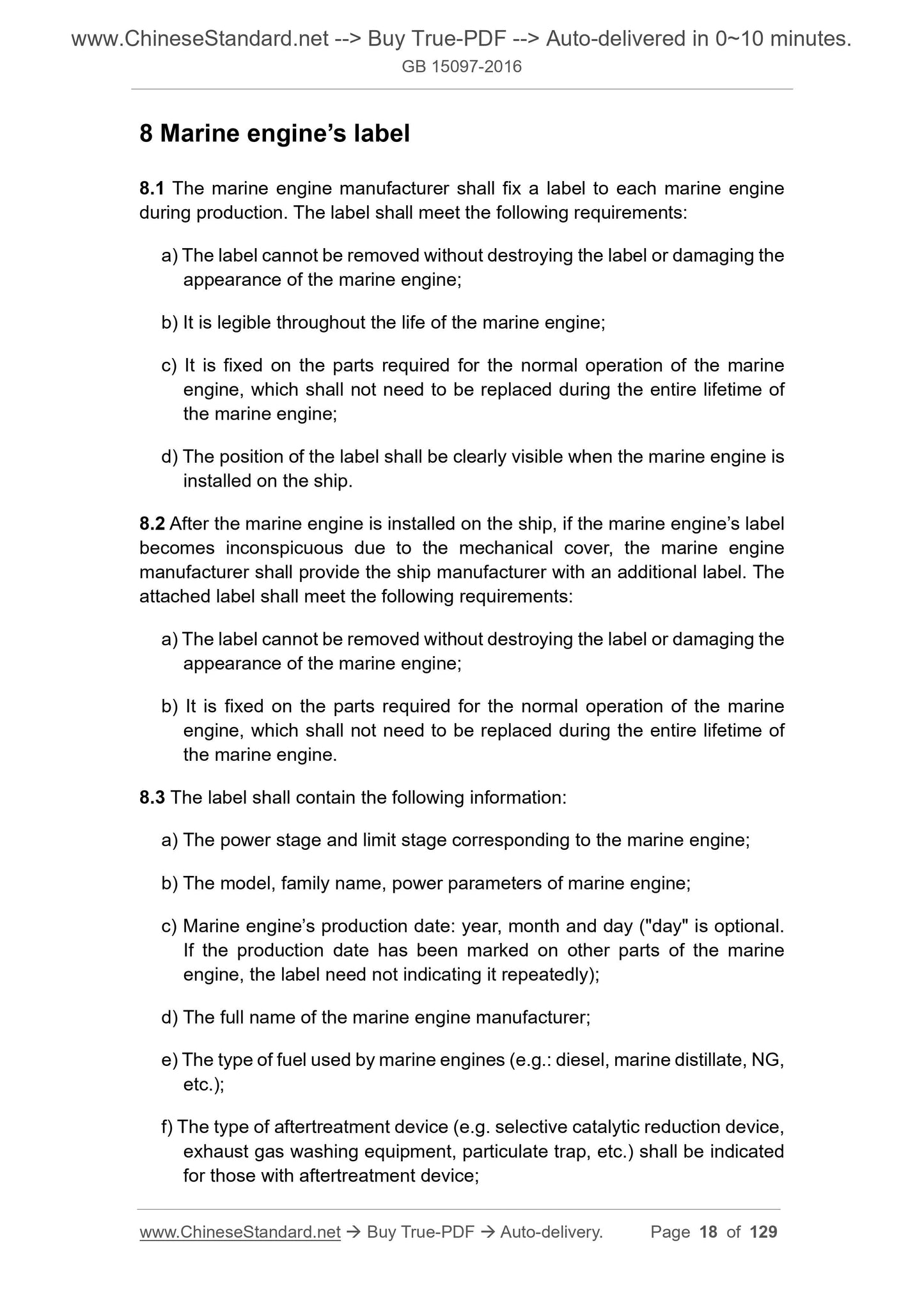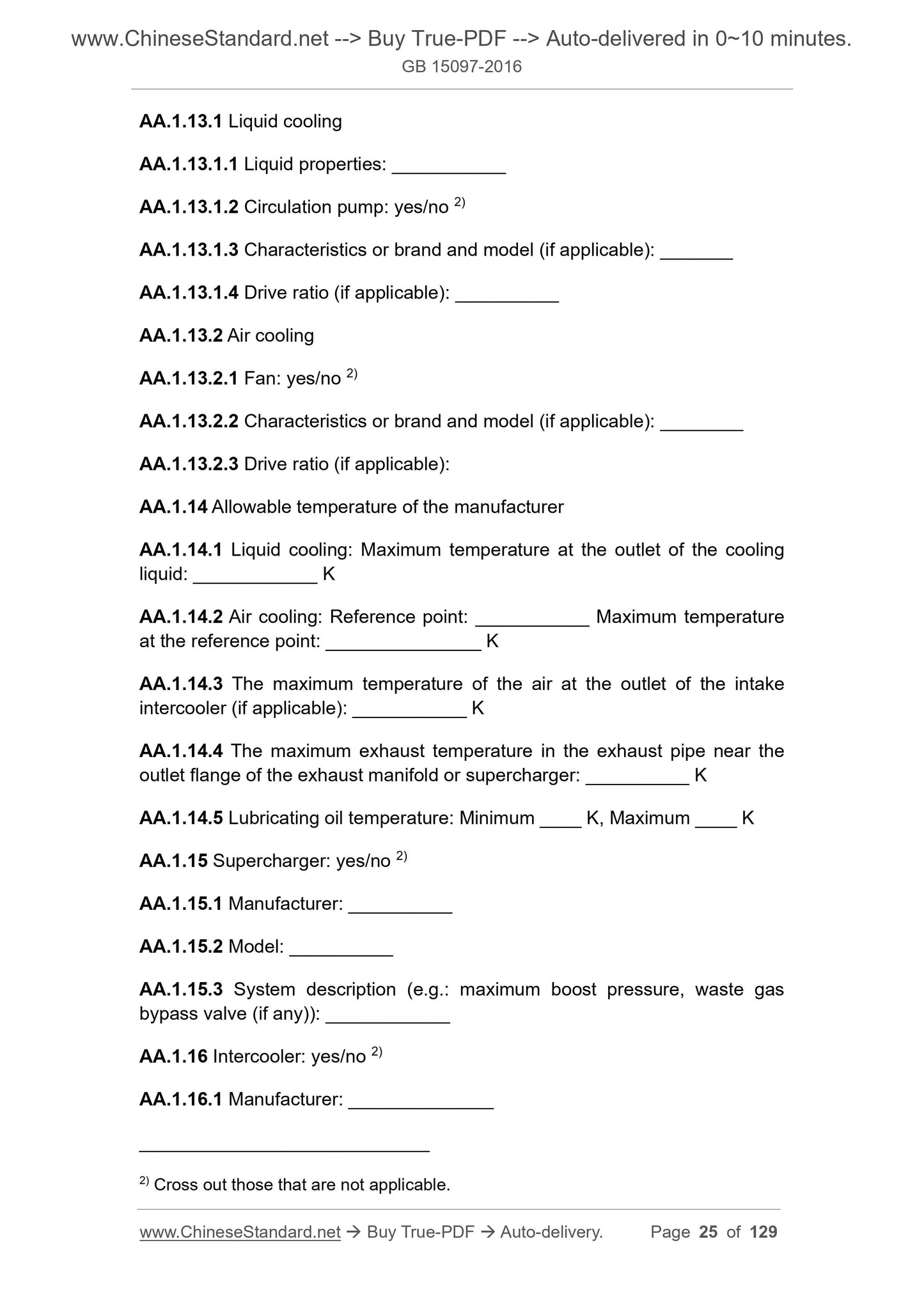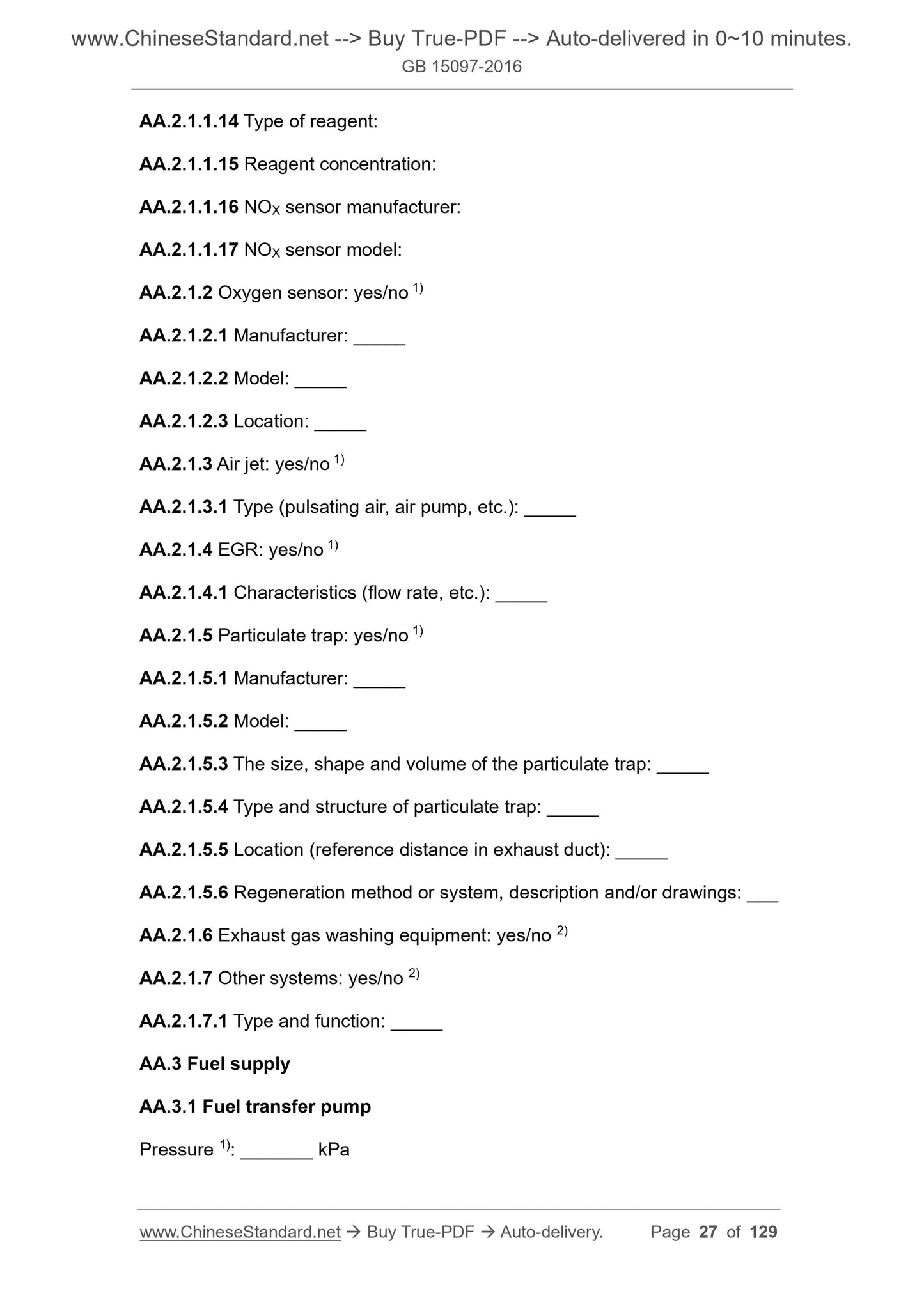1
/
of
12
www.ChineseStandard.us -- Field Test Asia Pte. Ltd.
GB 15097-2016 English PDF
GB 15097-2016 English PDF
Regular price
$690.00
Regular price
Sale price
$690.00
Unit price
/
per
Shipping calculated at checkout.
Couldn't load pickup availability
GB 15097-2016: Limits and measurement methods for exhaust pollutants from marine engines (CHINA I, II)
Delivery: 9 seconds. Download (and Email) true-PDF + Invoice.Get Quotation: Click GB 15097-2016 (Self-service in 1-minute)
Newer / historical versions: GB 15097-2016
Preview True-PDF
Scope
This standard specifies the emission limits and measurement methods for theexhaust pollutants of compression ignition engines and ignition gas fuel
(including diesel and natural gas dual fuel) engines (hereinafter referred to as.
marine engines) used for ships.
This standard is applicable to the type test, production consistency inspection,
durability requirements of category 1 and category 2 marine engines (including
main engines and auxiliary engines) which have a rated net power greater than
37 kW for inland vessels, coastal vessels, river-sea ships, channel ships and
fishing ships. This standard also stipulates the emission requirements for ships
and marine engines after rebuilding.
This standard does not apply to emergency marine engines used for ships,
marine engines installed on lifeboats, marine engines on any equipment or
devices used only in emergency situations.
Category 3 marine engines implement the requirements of GD 01.
Marine engines which have a rated net power not exceeding 37 kW implement
the GB 20891 standard.
Basic Data
| Standard ID | GB 15097-2016 (GB15097-2016) |
| Description (Translated English) | Limits and measurement methods for exhaust pollutants from marine engines (CHINA I, II) |
| Sector / Industry | National Standard |
| Classification of Chinese Standard | Z64 |
| Word Count Estimation | 82,81 |
| Date of Issue | 2016-08-22 |
| Date of Implementation | 2018-07-01 |
| Older Standard (superseded by this standard) | GB/T 15097-2008 |
| Regulation (derived from) | Ministry of Environmental Protection Notice No.56 of 2016; National Standard Notice No.2516 of 2016 |
| Issuing agency(ies) | General Administration of Quality Supervision, Inspection and Quarantine of the People's Republic of China, Standardization Administration of the People's Republic of China |
Share























